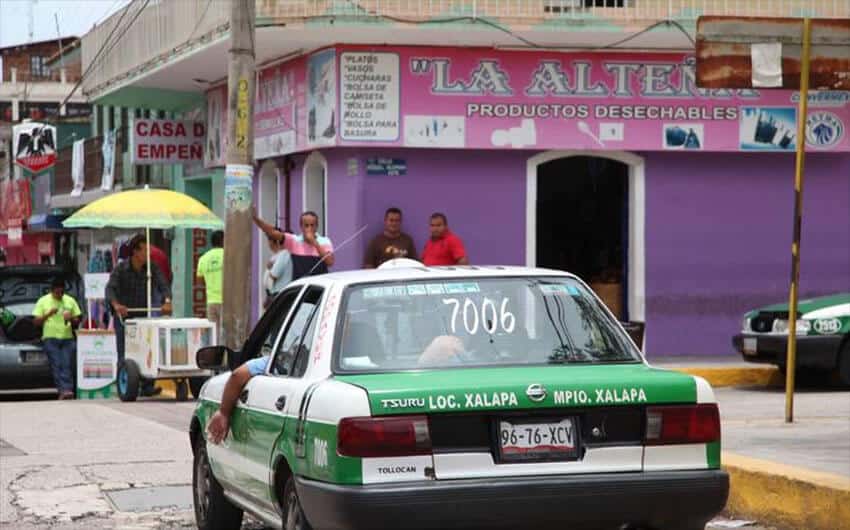I’ve been in a lot of taxis since first coming to Mexico 20 years ago — easily thousands. I’ve not had a vehicle for much of that time, though even when I did, I would still take a taxi to certain destinations when, for example, I knew parking would be scarce.
While I used to find the city buses to be a perfectly fine way to get around, that’s changed with such drastic increases in traffic (and simultaneously, bus fare) that have made any bus ride an event that might very well get you to your destination at the same speed as walking would have.
So, if you don’t have a car and don’t live in a place with a metro, then a taxi’s the way to go.
Most of my taxi rides are fairly uneventful. For about a third of my rides, there’s not a word spoken. For the others, it’s always the same conversation: where am I from, do I like Mexico, isn’t it funny that you’re here when so many of us want to go there, etc. There’s a list of probably 10 topics that typically get covered, but I don’t mind. I like to talk to people, so I’m usually happy to chitchat while we travel.
And while more than a few of them have been such crazy drivers that I’ve spent most of the ride praying to simply get to my destination safely, most drivers are very nice.
One thing that separates taxis in Xalapa from those in other areas of Mexico is that here, they’re still quite cheap. I routinely pay 50 pesos or less to most places in the city. There was a time when I’d haggle over the fare and get pretty worked up when I found it to be obvious that they were charging me a special “gringa” price, but aside from an occasional complaint (“But they always charge me 40 for this trip!”), I’ve mostly calmed down.
The main thing that’s helped me to calm down is the presence of ride-hailing apps. We don’t have Uber in Xalapa — it seems that taxi drivers have been successful in preventing the platform from establishing itself here — but we do have one called InDriver that (I think) works much the same way.
To use it, I put in my location and the address of the place I want to go, I offer a price which is slightly higher than I might offer otherwise since the app charges drivers 10%, and it goes out to drivers close by. Though I pay 10-15 pesos more for the ride than I would if I’d gone out to hail it on the street, I love knowing that they’re not going to surprise me with a ridiculous fare at the end; I also like not having to give directions on how to get to my destination.

Almost everyone who’s arrived through InDriver has been someone driving a taxi; at least in my city, taxi drivers are working through it rather than competing against it. The prices they charge and the prices that are typical on the app are similar, so it seems to have just become one more tool for them.
I’ve learned, however, that this is not the way things are everywhere.
When I visited a good friend in Los Cabos a few years ago, there was a big fight going on between taxi drivers and Uber. It’s one that I’ve read has gone on quite a bit throughout the Americas, including in my own home country.
In Los Cabos, an area of Mexico that thrives on tourism and is accustomed to a large presence of foreigners, taxis typically charged what their counterparts in New York City did. And this is the part where I’m personally conflicted: I think that those prices are ridiculous because it’s so much more than I’m used to paying where I live (and so much more than I know most middle-class Mexicans can afford). While many foreigners can afford to pay those prices, the prices themselves are excessive and ensure that taxis are simply inaccessible to large swaths of people.
On the other hand, if there are workers who are accustomed to being paid a certain amount and enjoying a certain degree of steady work, it’s perfectly understandable that they don’t want to lose that. I’m accustomed to being paid a certain amount of money for the work I do. If I suddenly started getting paid less or not receiving the work because others were showing up to charge half of what I do for exact the same thing, I’d be pretty upset about it.
So as a worker, I sympathize with taxi drivers: I’m also a freelance worker that depends on making a certain amount of money each month to meet my expenses, something that results in intense and consistent monthly hustling. As volatile and varied as my income might be, my financial obligations are incredibly predictable and ever-growing.
But as a consumer that needs access to rides, I sympathize with them exactly none. If they want to keep driving, then they should sign up for these apps as drivers in my own city have, because it means they’ll keep giving rides even when no one stops them on the side of the road or calls their dispatcher. If they don’t want to, then I’m guessing it’s likely an indication that they’re charging excessively because they can, and ride-hailing apps are a threat to their established inflated prices.
Now that the Mexico City airport – along with a whole host of similar other places (my local mall for example) – is officially not letting in ride-hailing app drivers, taxi drivers there might see a slight increase in their use. But anyone can simply leave the grounds to meet their drivers, which I believe is what many will do.
It might be time for taxi drivers to stop their uphill battle against ride-hailing apps. They’re not going away. Taxi drivers who pay to line up for access to high-paying customers … I wouldn’t put my money on the survival of that gig.
Sarah DeVries is a writer and translator based in Xalapa, Veracruz. She can be reached through her website, sdevrieswritingandtranslating.com and her Patreon page.
